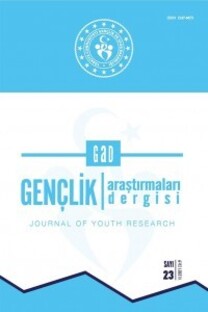Üniversite Öğrenci Yurdu Kullanıcı Memnuniyeti İçin İskân Sürecinde Değerlendirme Çalışması
İskân Sürecinde Değerlendirme1 İSD-POE , iç ortam kalitesi İOK-IEQ , enerji performansı ve kullanıcıların memnuniyeti de dahil olmak üzere, bir binanın kullanımdaki performansı hakkında sistematik bir değerlendirme yöntemidir. İskân Sürecinde Değerlendirme, binaların planlanan performansını ve gerçek performansını ölçmek için bir yöntem olarak tanımlanabilir. Bu süreçte teknik ölçümler yapılabildiği gibi, kullanıcılarla sistematik araştırmalar ve görüşmeler de yapılabilir. Bu şekilde binanın performansı ölçülür ve tesis yöneticisine ve tüm teknik ekibe geri bildirim sağlanabilir. Bu bilgiler gelecekteki projelerde kullanılarak, hataların tekrarlanmaması sağlanır.Bu yazı, literatürden elde edilen kullanıcı memnuniyetinin fonksiyonel ve teknik boyutları ile Ankara’daki özel bir kız öğrenci yurt binasının analizine odaklanmaktadır. Ölçüm boyutları literatürden türetilmiştir ve uzman görüşü ile bazı değişiklikler ile mevcut duruma uyarlanmıştır. Çalışma kapsamında 20 fonksiyonel ve 20 teknik performans unsurlarına göre öğrencilerin memnuniyet düzeylerine ilişkin yanıtlarını almak için bir değerlendirme çalışması yürütülmektedir. Öğrenci yurduna ilişkin yapılan iskân sürecinde değerlendirme sonuçlarına yer verilmektedir. Kullanılan metodoloji, yurt kullanıcılarının kullanıcı memnuniyetini sistematik olarak değerlendirmek için gelişmiş bir sistem için yükseltilebilir
Anahtar Kelimeler:
Öğrenci Yurtları, Yurt, Kullanıcı Memnuniyet Performansı, İskân Sürecinde Değerlendirme, Türkiye
A Post Occupancy Evaluation Study for University Students’ User Satisfaction of Dormitories
Post-Occupancy Evaluation POE is a systematic method of criticism about a building’s performance in use, including indoor environment quality IEQ , energy performance and occupants’ satisfaction. Post Occupancy Evaluation can be defined as a method to measure the planned performance and the actual performance of the buildings. In this process, technical measurements can be made, and systematic surveys and interviews can be conducted with users. In this way, the performance of the building is measured, and a feedback can be provided to the facility manager and the entire technical team. By using this information in future projects, it is ensured that the errors are not repeated.This paper focuses on the analysis of a private female dormitory building in Ankara, with the functional and technical dimensions of user satisfaction which are obtained from literature. The dimensions are derived from the literature and adapted with some modifications with expert view. Within the study a user satisfaction evaluation study is achieved to acquire the students’ responses regarding their satisfaction level according to 20 functional and 20 technical performance elements. The results of the post-occupancy evaluation of the dormitory are presented. The employed methodology can be upgraded for an advanced system to evaluate the user satisfaction of dormitory users systemically
Keywords:
Student Housing, Dormitory, User Satisfaction Performance, Post-Occupancy Evaluation, Turkey,
___
- • Alborz, N., & Berardi, U. (2015). A post occupancy evaluation framework for LEED certified U.S. higher education residence halls. Procedia Engineering, 118, 19–27. https://doi.org/10.1016/j. proeng.2015.08.399
- • ASHRAE Standard., (2004).
- • Dahlan, N. D., Jones, P. J., Alexander, D. K., Salleh, E., & Alias, J. (2009). Evidence base prioritisation of indoor comfort perceptions in Malaysian typical multi-storey hostels. Building and Environment, 44(10), 2158–2165. https://doi.org/10.1016/J.BUILDENV.2009.03.010
- • Dahlan, N. D., Jones, P. J., Alexander, D. K., Salleh, E., & Dixon, D. (2008). Field measurement and subjects’ votes assessment on thermal comfort in high-rise hostels in Malaysia. Indoor and Built Environment, 17(4), 334–345. https://doi.org/10.1177/1420326X08094585
- • Dhaka, S., Mathur, J., Wagner, A., Agarwal, G. Das, & Garg, V. (2013). Evaluation of thermal environmental conditions and thermal perception at naturally ventilated hostels of undergraduate students in composite climate. Building and Environment, 66, 42–53. https://doi.org/10.1016/J.BUILDENV.2013.04.015
- • Hassanain, M. A. (2008). On the performance evaluation of sustainable student housing facility,. Journal of Facilities Management, 6(3), 212–225. https://doi.org/10.1108/14725960810885989
- • Hosseinijou, S. A., Mansour, S., & Shirazi, M. A. (2014). Social life cycle assessment for material selection: a case study of building materials. The International Journal of Life Cycle Assessment, 19(3), 620–645. https://doi.org/10.1007/s11367-013-0658-1
- • Jones, A. P. (1999). Indoor air quality and health. Atmospheric Environment, 33(28), 4535–4564. https:// doi.org/10.1016/S1352-2310(99)00272-1
- • L. Carpenter, C., & A. Oloufa, A. (1995). Postoccupancy Evaluation of Buildings and Development of Facility Performance Criteria. Journal of Architectural Engineering, 1. https://doi.org/10.1061/ (ASCE)1076-0431(1995)1:2(77)
- • Lai, J. H. K. (2013). Gap theory based analysis of user expectation and satisfaction: The case of a hostel building. Building and Environment, 69, 183–193. https://doi.org/10.1016/J.BUILDENV.2013.08.006
- • Najib, N. ‘Ulyani M., Yusof, N., & Sani, N. M. (2012). The Effects of Students’ Socio-Physical Backgrounds onto Satisfaction with Student Dormitories. Procedia - Social and Behavioral Sciences, 62, 64–74. https://doi.org/10.1016/J.SBSPRO.2012.09.013
- • Strelets, K., Perlova, E., Platonova, M., Pankova, A., Romero, M., & Al-Shabab, M. S. (2016). Post Occupancy Evaluation (POE) and Energy Conservation Opportunities (ECOs) Study for Three Facilities in SPbPU in Saint Petersburg. Procedia Engineering, 165, 1568–1578. https://doi.org/10.1016/J. PROENG.2016.11.895
- • Wafi, S. R. S., & Ismail, M. R. (2010). Occupant’s thermal satisfaction a case study in Universiti Sains Malaysia (USM) Hostels Penang, Malaysia. European Journal of Scientific Research, 46(3), 309–319. Retrieved from https://www.scopus.com/inward/record.uri?eid=2-s2.0-79960084772&partnerID=40&m d5=9fcb31c912a296d645ed008959e5d7cc
- • Wu, Z., Li, N., Wargocki, P., Peng, J., Li, J., & Cui, H. (2019). Adaptive thermal comfort in naturally ventilated dormitory buildings in Changsha, China. Energy and Buildings, 186, 56–70. https://doi. org/10.1016/J.ENBUILD.2019.01.029
- • Xin, J., & Huang, C. (2013). Fire risk analysis of residential buildings based on scenario clusters and its application in fire risk management. Fire Safety Journal, 62, 72–78. https://doi.org/10.1016/J. FIRESAF.2013.09.022
- • Yu, C.-J., & Kang, J. (2009). Environmental impact of acoustic materials in residential buildings. Building and Environment - BLDG ENVIRON, 44, 2166–2175. https://doi.org/10.1016/j.buildenv.2009.03.013
- ISSN: 2147-8473
- Yayın Aralığı: 3
- Başlangıç: 2012
- Yayıncı: T.C. Gençlik ve Spor Bakanlığı Eğitim, Kültür ve Araştırma genel Müdürlüğü
Sayıdaki Diğer Makaleler
Sosyal Ağlarda Arkadaş Olmak: Keşifsel Bir Araştırma
Suç Habitatının Gençlerin Özerkliğine Etki Eden Nitelikleri: İzmir İli Örneği
Üniversite Öğrenci Yurdu Kullanıcı Memnuniyeti İçin İskân Sürecinde Değerlendirme Çalışması
Türkiye’de Genç İşsizlik ve Yoksulluk İlişkisi: Bölgeler Düzeyinde Bir İnceleme
